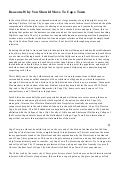

‘Women should become familiar with checking their vulva for any unusual lumps or bumps,’ says Miss Adib. As with your breasts, check your vulva regularly, so that you can tell if something changes. It’s important to know what’s normal for you as every vulva is unique, so get to know your own body. ‘Whether it’s serious or not really depends on what it feels or looks like.’ Therefore, a medical opinion is vital. ‘If you notice a lump or bump in your vulva, go to see your GP as a first port of call, or if you have a gynaecologist arrange to see them,’ advises Adib. They are completely harmless and dont usually cause any pain or discomfort, but they can snag on clothing or jewellery and bleed as a result. Identifying the exact cause can be challenging because there are multiple causative factors for them. Therefore, when we talk about finding a lump on the vagina, we often referring to a lump or bump on the vuvla. Right Care Women's Health A Guide to Bumps on Your Vaginal Area Causes When to see a doctor Treatment Summary Bumps in the vaginal area are typically a cause for concern. We often use the word vagina to refer to both the internal organ, the vagina, and the external parts of the female genitals, which is called the vulva. The exact treatment plan is adjusted to suit each individuals requirements. We speak to Ms Tania Adib, consultant gynaecologist at The Medical Chambers Kensington, about the most common causes of lumps and bumps on the vagina: Vagina vs. Our doctors tend to use a combination of surgery and laser to remove the skin tags. They may grow on your labia (inner and outer vaginal lips), near your vaginal opening and anus or in your inner thigh area (groin). What are vaginal skin tags Vaginal skin tags are small, fleshy growths on your genitals or vulva. It is important to see your doctor, and it’s important not to let embarrassment prevent you from doing so. Overview Vaginal skin tags are loose, fleshy growths that form on your vulva. For some women, vaginal skin tags are also a cosmetic concern. However, some skin tags can also interfere with sexual intercourse. If the tiny skin growths aren’t causing you any pain or discomfort, you can choose to leave them alone. Sometimes, skin tags will fall off on their own. In most cases, the occasional lump is likely to be perfectly harmless, but for your peace of mind it’s always best to seek medical advice. Treatment for vaginal skin tags may not be necessary. Vaginal lumps and bumps are surprisingly common, and they can occur for a number of reasons. If you see a change in a skin growth, contact your doctor.Discovering an odd lump, bump, spot or rash on your vagina can be unnerving.Part the hair on your head to look at your scalp. Use a hand mirror to look at the back of your legs, the back of your neck, and your back, rear end (buttocks), and genital area.Look at your feet, the soles of your feet, and the spaces between your toes.Bend your elbows and look carefully at your forearms, the back of your upper arms, and your palms.Then look at your right and left sides with your arms raised. Look carefully at the front and back of your body. Stand in front of a full-length mirror.Some genital disorders are contagious, including sexually transmitted diseases. They can interfere with sexual functioning, self-image and interpersonal relationships. Check all the skin on your body once a month for skin growths or other changes, such as color and feel of the skin. Introduction Genital skin problems are very common and can be very itchy or painful, distressing and embarrassing.You may cover the wound with a thin layer of petroleum jelly, such as Vaseline, and a nonstick bandage.

Don't use hydrogen peroxide or alcohol, which can slow healing. If you have a skin tag removed, clean the area with soap and water two times a day unless your doctor gives you different instructions.If clothing irritates a skin tag, cover it with a bandage to prevent rubbing and bleeding.


 0 kommentar(er)
0 kommentar(er)
